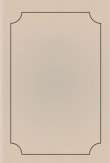قراءة كتاب Object Lessons on the Human Body A Transcript of Lessons Given in the Primary Department of School No. 49, New York City
تنويه: تعرض هنا نبذة من اول ١٠ صفحات فقط من الكتاب الالكتروني، لقراءة الكتاب كاملا اضغط على الزر “اشتر الآن"

Object Lessons on the Human Body A Transcript of Lessons Given in the Primary Department of School No. 49, New York City
wink our eyelids."
QUESTIONS ON THE EARS.
Name the parts of the ear.
Where are your ears?—"On the sides of my head."
Which is the rim of the ear?—"The edge of the ear."
Which is the flap of the ear?—"The lower part of the ear."
Where is the drum of the ear?—"Inside of the ear."
How is the drum protected?—"By stiff hairs and a bitter wax at its entrance."
QUESTIONS ON THE NOSE.
Where is the nose?—"In the middle of the face."
Name the parts of the nose.
Where is the tip of the nose?—"At the end of the nose."
Where is the bridge of the nose?—"At the top of the nose, between the eyes."
Where is the cartilage?—"In the middle of the inside of the nose."
Of what use is the nose?—"To smell and breathe through."
What are the nostrils?—"The openings inside of the nose."
Of what use are the nostrils?—"To let the air into and out of the opening back of the mouth."
QUESTIONS ON THE MOUTH, ETC.
Where is the mouth?—"In the lower part of the face, between the nose and the chin."
Of what use is the mouth?—"To breathe, speak, and eat through."
What is in the mouth?—"My tongue, my upper teeth, my lower teeth, and my upper and lower jaws."
What covers the jaws?—"Red flesh, called gum."
Of what are the jaws composed?—"Of bones."
Of what are the teeth made?—"Of dentine, covered with enamel." See note, p. 19.
What is enamel?—"A smooth, white substance, harder than bone."
Of what use are the teeth?—"To eat and talk with."
What kinds of teeth have you?—"Cutting teeth, tearing teeth, grinding teeth."
Describe the cutting teeth.—"The cutting teeth have broad and flat edges."
Describe the tearing teeth.—"The tearing teeth are sharp and pointed."
Describe the grinding teeth.—"The grinding teeth are the thick, back teeth."
Which jaw is moved in eating?—"The lower jaw."
What work do the teeth perform?—"They cut, tear, and grind the food."
How many teeth has a child in a full set?—"Twenty teeth: ten in each jaw."
How many teeth has a grown person in a full set?—"Thirty-two: sixteen in each jaw."
What does the tongue do in eating?—"It rolls the food between the teeth, and helps in swallowing."
What is the saliva?—"A kind of liquid, sometimes called spit."
Of what use is it in eating?—"It wets and softens the food."
What do you mean by preserve?—"To keep from injury."
What do you mean by injury?—"Hurt."
How do you preserve your teeth? See Formula.
How do very hot or very cold drinks hurt the teeth?—"They crack the enamel."
What happens if the enamel is cracked?—"The teeth decay."
Then what must you do to preserve your teeth?—"I must try to keep the enamel from being cracked or injured in any way."
PART V.
FORMULA FOR DESCRIPTION OF THE BONES.
1. My skull is formed of several bones united, like two saws with their toothed edges hooked into each other.
2. My spine extends from the base of the skull behind, down the middle of my back.
It is composed of twenty-four short bones, piled one upon the other, with cartilage between them.
These bones are fastened together, forming an upright and flexible column, which makes me erect and graceful.
3. My ribs are


